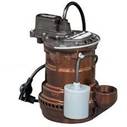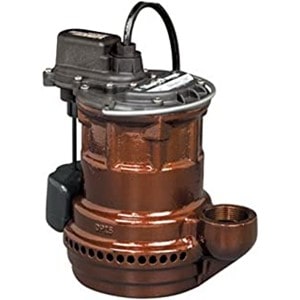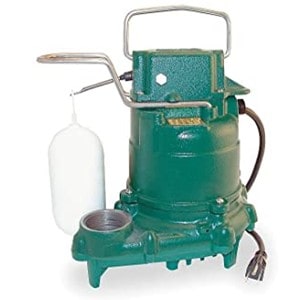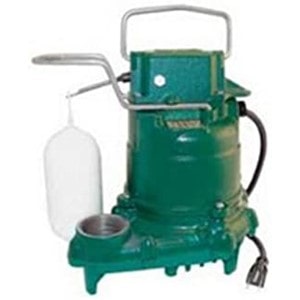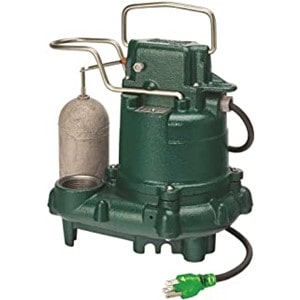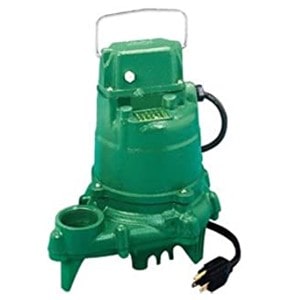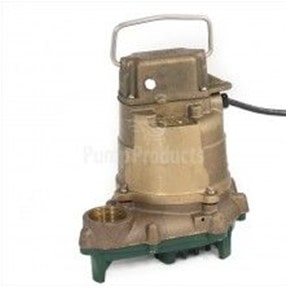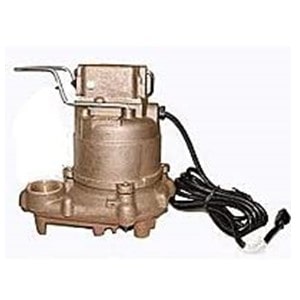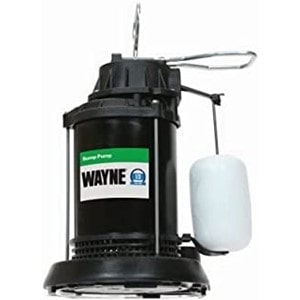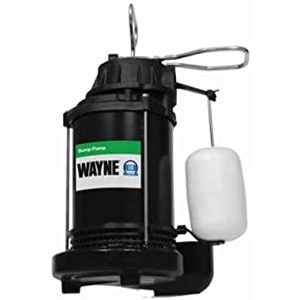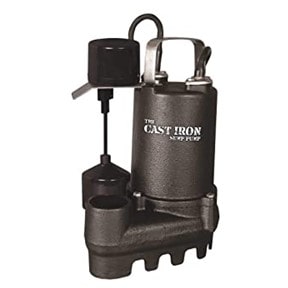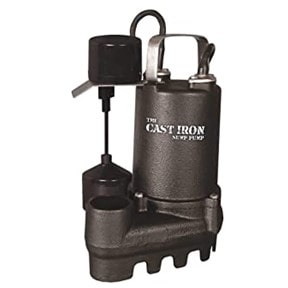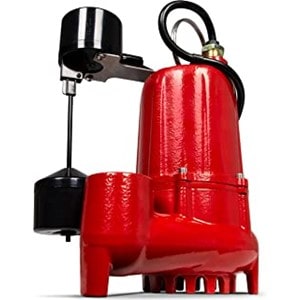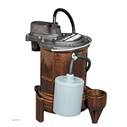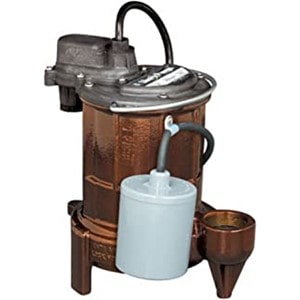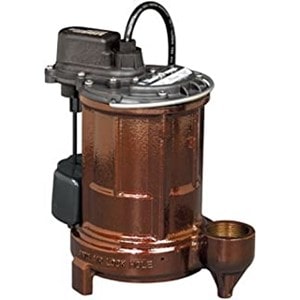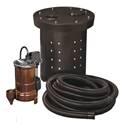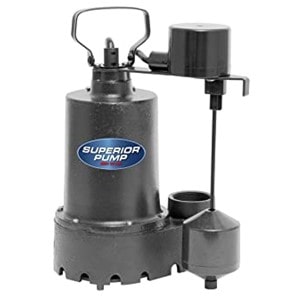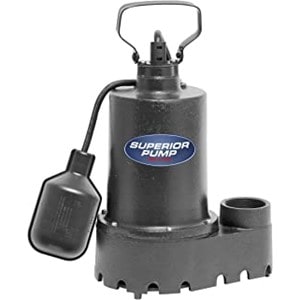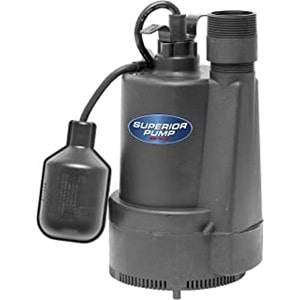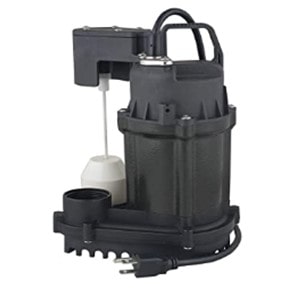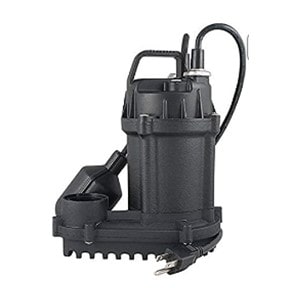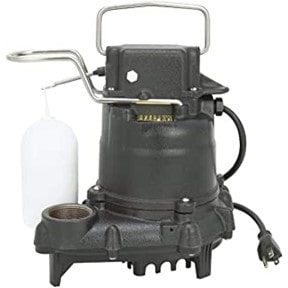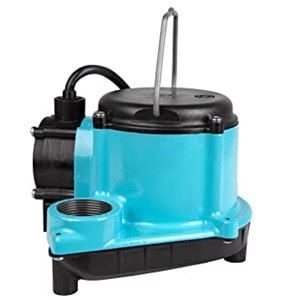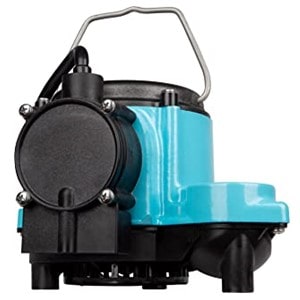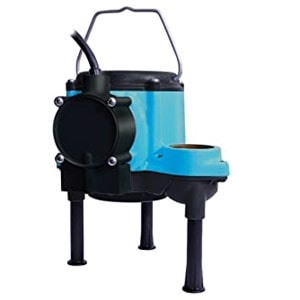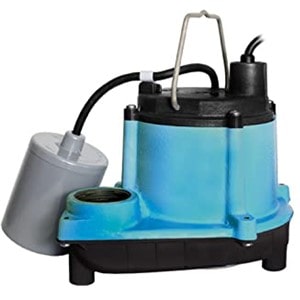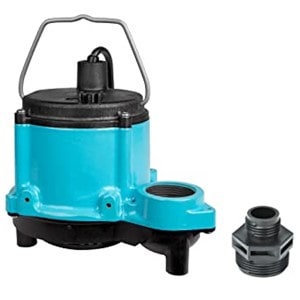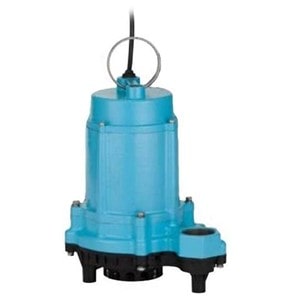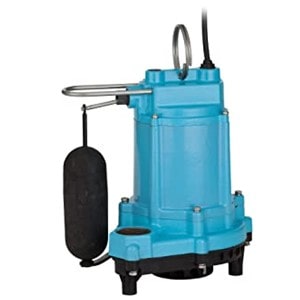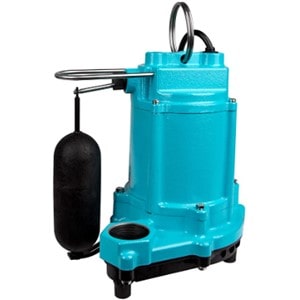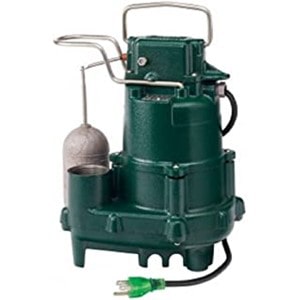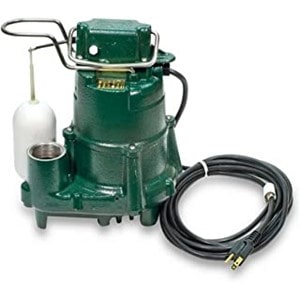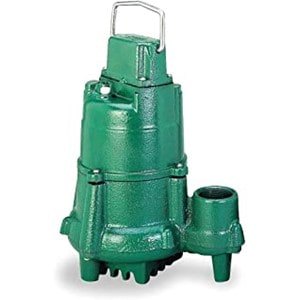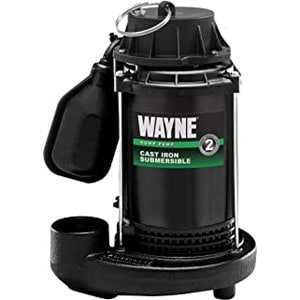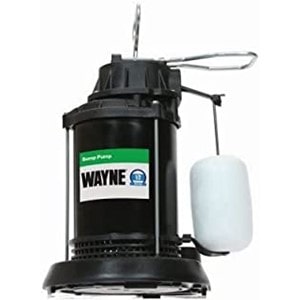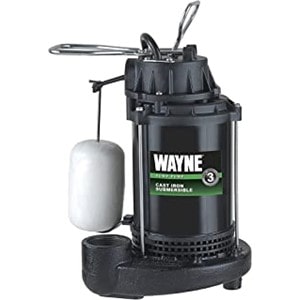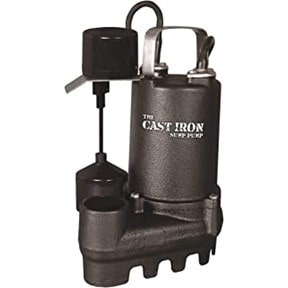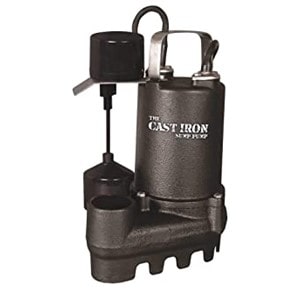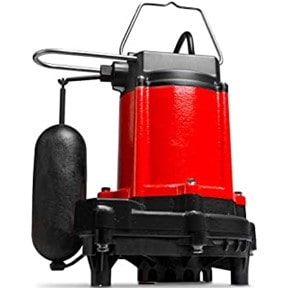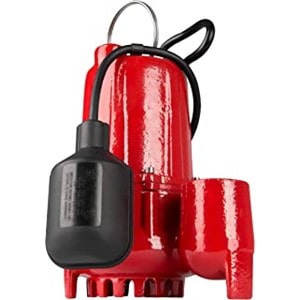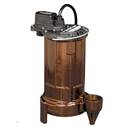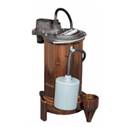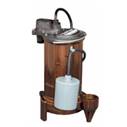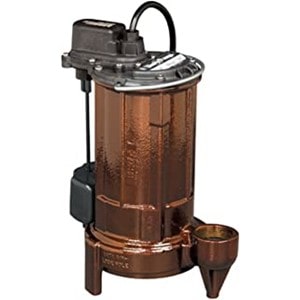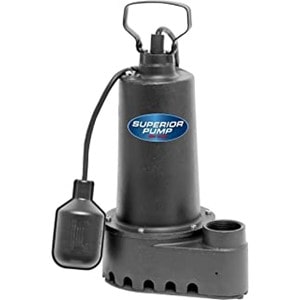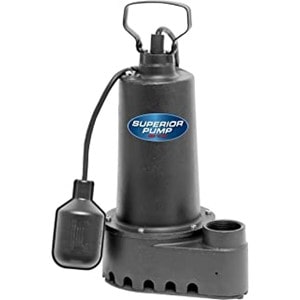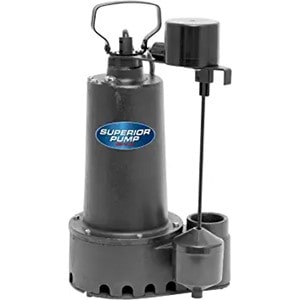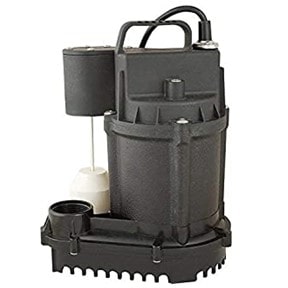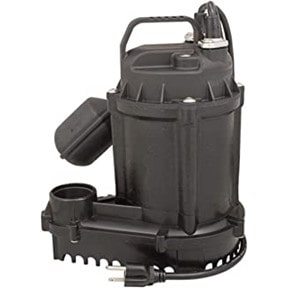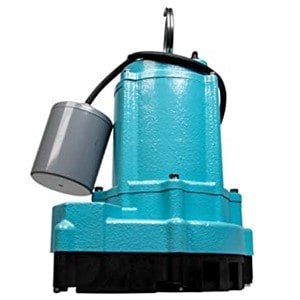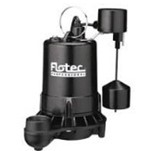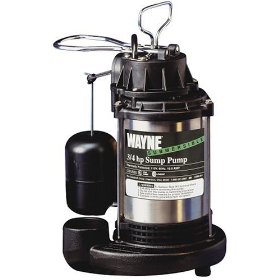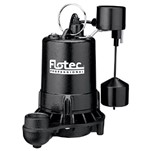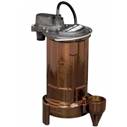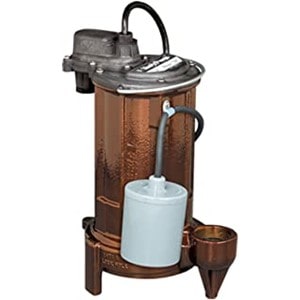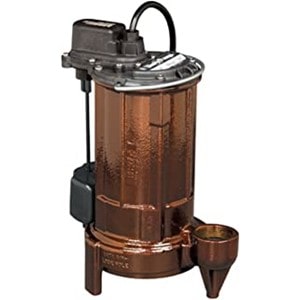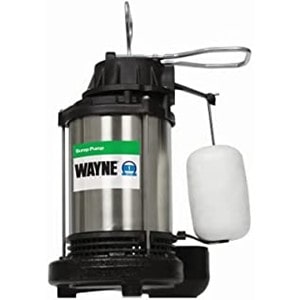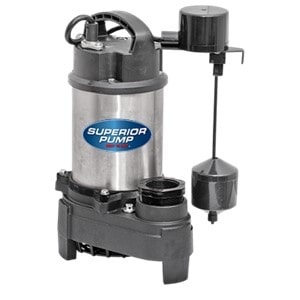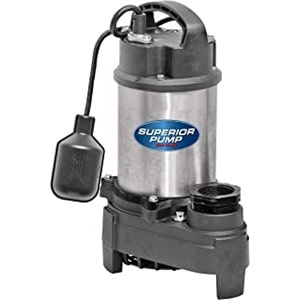How To Size Sump Pump
Five Quick Steps How To Size A Sump Pump
An Accurate Way To Calculate The Best Sump Pump Size For Your Pumping Needs
Shop For The Right Sized Sump Pump

Quick Info On How To Size A Sump Pump

Click the Table Of Contents button to Hide it. Click it again to see it.
How To Size Sump Pump Table Of Contents
Quick Five Steps How To Size A Sump Pump
In A Hurry? Do The Following Five Steps To Right Size A Sump Pump.
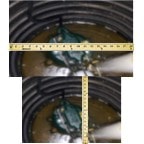
5) If basin diameter is 18 inches wide multiply by one. If basin diameter is 24 inches wide multiply by two. This is the GPM your sump pump needs.
Additional facts: One inch water height in an 18 inch wide sump basin equals one inch. In a 24 inch wide basin one inch height equals two gallons. If you know your sump pump model number, check the manufactures specs for the float ON and OFF height. Use this instead of measuring the water height. To get GPH multiple Step 5 by 60. To accomodate unkown factors, add an additional 10% to the GPM in Step 5.
There are other factors to consider so it is best to continue reading and learn about the measurement method. It is important to know how high the water must be pumped plus how many elbows are added to the discharge pipe system.
How To Size Sump Pump Guide
Learning how to size a sump-pump is very important. If the horsepower is too small it will not keep up with the water entering the pit and the basin will overflow. If it is too large, the-basin water will be removed too quickly and the motor will short cycle shortening its life.
Factors Affecting Sump Pump Sizing
Basement sump pump sizing is affected by the following five factors: 1) Height of the-basin 2) Diameter of the-basin 3) Vertical height of discharge pipe from pump port to horizontal pipe leaving the house 4) Number of elbows and check valves in discharge pipe system 5) Rate of water-flow into the-basin during heavy rains.
There are also non sump pump system related factors such as house perimeter measurements, landscape slope around the house, roof slope and size, soil type and water table height.
Sump Pump Sizing Calculator
Take the time to measure important aspects of your sump pump system so you have accurate results and really know what size sump pump is needed for your water pumping needs.
The following steps take the above mentioned factors and create a sump pump sizing calculator. Following these seven steps will help you to choose the best sump-pump horse power and pumping performance needed.
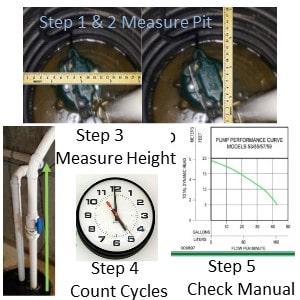
- 1) Measure The-Basin Height
- 2) Measure The-Basin Diameter
- 3) Find The Height Of The Vertical Portion Of The Discharge Pipe
- 4) Count The Number Of Elbows, Their Degrees, And Check Valves
- 5) Identify The Water Flow Rate Entering The Pit During Heavy Rains
- 6) Perform The Actual Calculation
- 7) Find A Sump-Pump That Can Handle The Water Flow Rate At The Measured Vertical Height
Step One: Measure The Height Of The Basin
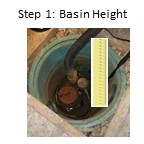
Step Two: Measure The Diameter Of The-Basin
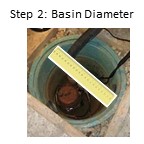
Step Three: Measure The Vertical Height Of The Discharge Pipe
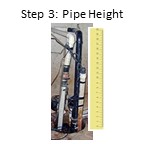
Step Four: Count The Number Of Elbows, Their Degrees And Check Valves
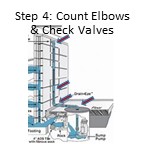
Step Five: Measure The Water Flow Rate Into The-Basin

Use your watch digital reading or a time piece second hand to see how frequently the motor runs in one minute during heavy rainstorms. For example, let's say the motor runs every 10 seconds.
Now take the above measurements and put them all together to calculate the water flow rate and pumping performance required. We are using a discharge-pipe diameter of 1-1/2 inches (1.5-in.). A smaller diameter cannot handle the same volume. Likewise a larger diameter can handle more volume.
- 1) The-basin diameter. Let's say it is 18 inches.
- 2) The vertical height of the discharge-pipe. Let's say it is 9 feet.
- 3) The ON OFF point. We found it to be 4 inches based on the manufactures specifications.
- 4) The number of times the pump-motor runs during 60 seconds. This is every 10 seconds.
Step Six: Perform The Actual Calculation
The actual calculation is as follows.
- 1) An 18 inch diameter pit converts to one inch equals 1 gallon of water. A 24 inch diameter converts to two inches and equals 2 gallons of water.
- 2) In the example we are using, the sump-basin is 18-inches in diameter so every 10 seconds 4 gallons of water is pumped. This equals 6 runs during a 60-second interval. Four gallons times six equals 24 gallons per minute.
- 3) The sump-pump must have a pumping performance of 24 GPM at a 10 foot vertical height
Step Seven: Find A Sump-Pump To Handle The Water-Flow-Rate At The Measured Vertical Height
At a minimum, manufacturers provide the following information.
- 1) Float Switch ON and OFF point. Vertical float-switches attached to the sump-pump come preset and cannot be altered by the home owner. Tether float-switches do allow around a three-inch variance for setting. The best solution for customizing the ON and OFF point, is installing the HC6000 switch controller which allows customizing both the ON and OFF point. We installed the HC6000 in 2011. It has never failed and is still working perfectly. This was the best decision we ever made because float-switches fail. The HC6000 is not only extremely reliable but has a lifetime warranty. Read more about the HC6000 Sump-Pump Switch.
- 2) Pumping performance curve at various vertical heights. The vertical heights of 0-feet, 5 feet, 10 feet, 15 feet and 20 feet are most common.
Use the documentation provided by the manufacture if you want to find the right size sump pump for your pumping needs.
Manufacturers specifications, pumping performance curve and manuals for popular sump pumps can be found at SumpPumps.PumpsSelection.com.
Watch How Zoeller Explains How To Size A Sump Pump
Zoeller Pump Company presents a lot of detail in the following video. As you will see there is a lot that goes into choosing the right size for a sump pump.
Measurement Method Summary
Learning How To Size A Sump Pump is easy if you do the steps prescribed above. The key steps are: Make sure you know the measurements of your sump-basin, the vertical height of the discharge-pipe, and the distance between the float-switch ON and OFF point. Take those measurements to calculate the water flow rate into the sump-pump-basin. Check the manufacturing documentation to find the right size pump. Installing the right size sump-pump is very important to preventing both flooding and motor burn out.
Manufacturer's documentation is readily available at Sump Pumps . Pumps Selection . Before purchasing your next sump-pump, make sure you have the right size.
Eyeball Method Of Sizing A Sump Pump
The Eyeball Method of sizing a sump pump is much less involved; but also less accurate.
There are seven steps to the Eyeball Method.
Eyeball Method Summary For Sizing A Sump Pump
Using the Eyeball Method certainly takes less time, but the knowledge gained about your sump pump systems is very limited. At least you know how much water your current sump pump can handle and what size of sump pump to install in case your existing sump pump needs replacement. But we would highly encourage you to take the Measurement Method approach sometime in the near future so you have a much better understanding of your system, its capability and its flexibility to meet higher pumping demands in the future.
Word Of Mouth Method Of Sizing A Sump Pump
The Word Of Mouth Method of sizing a sump pump is very unpredictable and highly inaccurate.
The Word Of Mouth Method assumes the information heard resembles your situation. But just because a neighbor needs a one-half horse power pump does not mean your property needs the same.
The water table, subsoil, house perimeter and roof size, and the landscape around the house in the same neighborhood may be different. Therefore to be prepared for those heavy rainstorms it is important to at least perform the Eyeball Method and to have the most peace of mind, perform the Measurement Method.
How To Right Size A Sump Pump Conclusion
Using a sump pump that is right sized is key to having peace of mind during the rainy season
Cleaning up a flooded basement certainly takes much more energy and costs more than taking the time to do the Measure Method so you have the right size sump pump installed
The quick way fo choose a right size sump pump is only five steps. 1) Meausere the pit diameter. 2) Identify the distance between the pump ON and OFF point. 3) Count how many times the motor turns on in one minute. 4) Multiply Step 2 By Step 3. 5) You are done. This is teh GPM an installed pump must handle for your water pumping needs.
Enjoy peace of mind knowing sump pump can handle the unpredictable, heavy rains that have increased in intensity and frequency these past few years.
Questions About How To Size A Sump Pump
Do I Need A 1/3 or 1/2 HP Sump Pump?
How Do I Size A Sump Pump?
Can A Sump Pump Be Too Powerful?
Is 1/2 HP Sump Pump Too Much?
How Much Water Can A 1/3 HP Pump?
How Far Can A 1/2 HP Pump Push Water?
Quick Shop Primary Sump Pumps By Horse Power
As Amazon Associates we make a commission from qualifying products. We use our commissions to cover our time creating pages like this. Your purchase price is the same as if you shop directly on Amazon.
Price at the time of publish gives you an idea of what the price may be though it is subject to change.
Hover Over Shop Sump Pumps By HP To See Drop Down Menu for Sump Pumps for a specific Horse Power. Scroll down the page to see all Sump Pump Horse Power Pumps.
Quick Shop 1/4 HP (0.25) Primary Submersible Sump Pumps
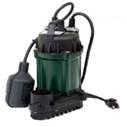
49 Water Riddr III
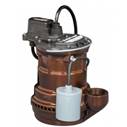
241


